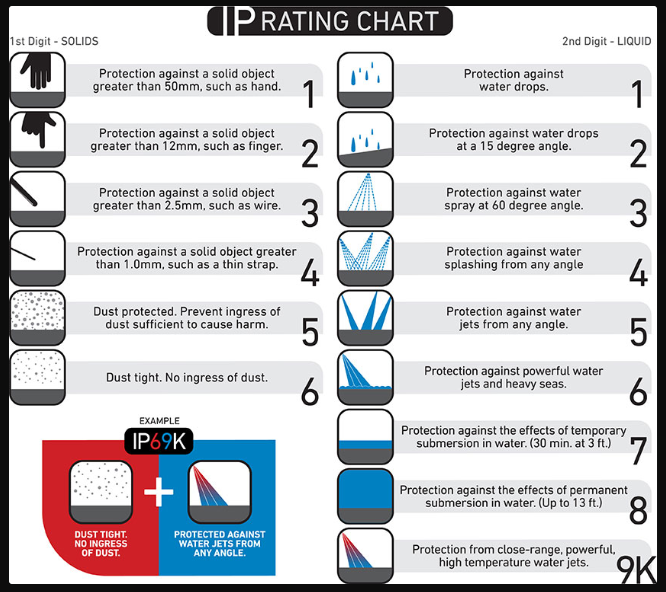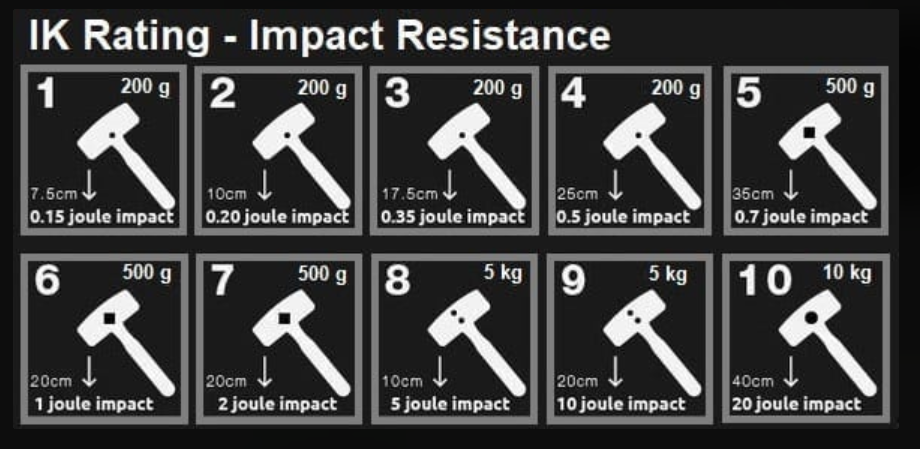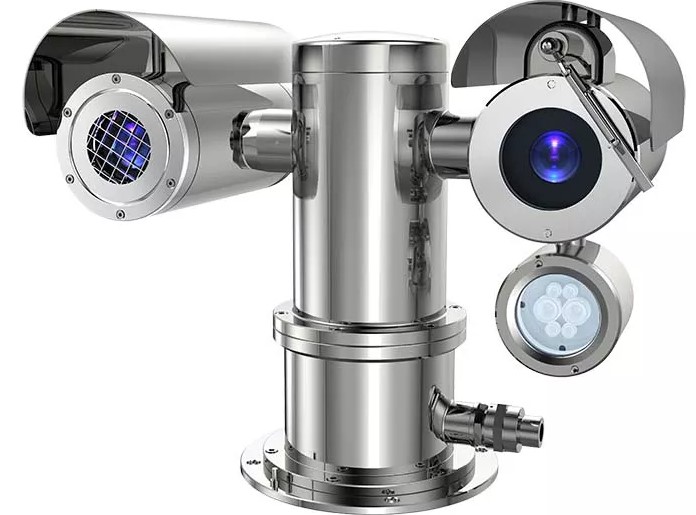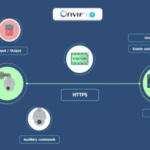How to Select Marine-Grade Cameras for Cargo Ships: A Technical Buyer’s Guide
Selecting a surveillance system for a cargo ship isn’t like picking a home security camera. The marine environment is one of the most punishing on Earth, combining corrosive saltwater, constant vibration, extreme temperatures, and potential physical impacts. The right camera system is a critical tool for safety, security, and operational efficiency. The wrong one is a wasted investment that will fail when you need it most.
This technical guide will walk you through the essential criteria for selecting marine-grade cameras that will survive the journey and perform flawlessly.
1. The Non-Negotiables: Environmental Protection & Certifications
Before considering resolution or zoom, your first filter must be durability and compliance. These features are non-negotiable.
A. Ingress Protection (IP) Rating: Keeping the Elements Out

The IP rating is the most critical specification, indicating the level of protection against solids and liquids.
-
First Digit (Solids): You need a 6. This means “dust-tight.” No dust can enter the housing, which is vital for engine room areas and general deck dust.
-
Second Digit (Liquids):
-
IP66: Protected against powerful water jets from any direction. Suitable for most exposed deck areas, resistant to heavy weather and waves.
-
IP67: Protected against immersion in 1 meter of water for 30 minutes. This is the recommended minimum for locations on the bow, stern, or anywhere that might be submerged by a large wave.
-
IP68: Protected against continuous immersion under pressure (e.g., several meters depth). The gold standard for maximum reliability against constant spray and immersion.
-
Verdict: For all external placements on a cargo ship, prioritise IP67–– and IP68-rated cameras.
B. Impact Resistance (IK Rating)

This measures protection against mechanical impact. It’s crucial for security cameras and those in high-traffic areas where they might be bumped by equipment or personnel.
-
IK10: The highest common rating, withstands an impact of 20 joules (equivalent to a 5kg mass dropped from 40cm). Target IK10 for all external and vulnerable cameras.
C. Marine & Electrical Certifications: The Legal Must-Haves
Using uncertified equipment can void your vessel’s class certification and create dangerous electromagnetic interference (EMI) with critical navigation and communication systems.
-
IEC 60945: This is the international standard for navigation and radio communication equipment. It covers environmental testing (temperature, humidity, vibration) and Electromagnetic Compatibility (EMC). This certification is an absolute must-have.
-
Classification Society Approval: Your cameras should be type-approved by a major classification society such as DNV-GL, American Bureau of Shipping (ABS), or Lloyd’s Register (LR). This means they have been tested and meet specific marine standards for safety and performance.
-
ATEX / IECEx (For Specific Areas): If installing cameras in potentially explosive atmospheres (e.g., near fuel tank vents or certain chemical cargo holds), they must have these explosion-proof certifications.
2. Choosing the Right Camera Type for the Job
How to Select Marine-Grade Cameras for Cargo Ships: A Technical Buyer’s Guide
Selecting a surveillance system
A. PTZ (Pan-Tilt-Zoom) Cameras: The Versatile Workhorses
-
Best For: General deck monitoring, stern and bow overview, tracking approaching vessels, assisting with docking, and monitoring cargo operations.
-
Key Features to Look For:
-
Optical Zoom: Ignore “digital zoom.” Look for a high optical zoom (e.g., 30x, 40x). This is the physical lens moving, maintaining image quality at long range.
-
Auto-Tracking: Advanced models can automatically track a moving object (like a pilot boat or a person on deck) once selected.
-
Preset Positions: Ability to save specific views (e.g., “Port Lifeboat,” “Crane #4”) and return to them with a single click.
-
Integrated Heater & Wiper: Essential for operations in cold climates to prevent icing or in areas with heavy salt spray to keep the dome clear.
-
B. Thermal Imaging Cameras: Seeing the Unseeable
-
Best For: Night navigation, man-overboard detection, search and rescue, fog penetration, and anti-piracy watch. They detect heat signatures, not light.
-
Key Features to Look For:
-
Sensor Resolution: Higher resolution (e.g., 640×480 px) provides a much clearer thermal image than a lower one (e.g., 320×240 px), allowing you to identify objects at greater distances.
-
Lens Focal Length: A longer focal length provides a narrower field of view but a greater depth of field.
-
NETD (< 40 mK): Noise Equivalent Temperature Difference. A lower NETD indicates a more sensitive sensor, capable of detecting smaller temperature differences (critical for spotting a person in the water).
-
C. Fixed Cameras (Bullet & Dome): For Specific, Reliable Views
-
Fixed Bullet Cameras: With long, rugged housings. Best for long-range, fixed views (e.g., down a passageway, monitoring a specific door or piece of equipment).
-
Fixed Dome Cameras: More discreet and tamper-resistant. Best for internal areas like the mess room, corridors, engine control room, and inside the bridge.
3. Key Technical Specifications to Decode
When comparing models, pay close attention to these specs on the datasheet.
| Specification | What It Means | What to Look For |
|---|---|---|
| Resolution | The number of pixels. Higher = more detail. | 4K (8MP) is ideal for wide views where detail is key (e.g., deck). 1080p (2MP) is sufficient for many general tasks. |
| Low-Light Performance | How well the camera sees in darkness. | Look for a low Lux rating (e.g., 0.001 Lux). Starlight technology or large sensors indicate superior performance. |
| Wide Dynamic Range (WDR) | Ability to see detail in very bright and very dark areas of the same scene. | Essential for viewing from a dark bridge interior to a bright deck. True WDR (using two exposures) is far superior to digital WDR. |
| Power over Ethernet (PoE) | Sends both power and data over a single Ethernet cable. | A huge advantage for DIY. Simplifies installation massively. Ensure your NVR or network switch supports PoE. |
4. Practical Application: Matching Cameras to Locations
| Location on Ship | Recommended Camera Type | Key Features | Why? |
|---|---|---|---|
| Bow & Stern | PTZ Camera | IP68, Heater/Wiper, 30x+ Zoom | Faces the harshest weather; it needs immersion protection and range. |
| Bridge Wings | Fixed Bullet Camera | IP67, True WDR, 4K | Fixed view for docking/navigation; must handle bright and dark areas. |
| Main Deck (Cargo) | PTZ Camera | IP67, Auto-Tracking, IK10 | To monitor operations and track movement, it must be vandal-resistant. |
| Engine Room | Fixed Dome Camera | IK10, Anti-Corrosion | Discreet, tamper-resistant, and must handle heat and vibration. |
| Anti-Piracy/Night Watch | Thermal PTZ Camera | IP67, 640×480 Thermal, 25x+ Zoom | Must see in total darkness, fog, and at long ranges for early warning. |
The Final Pre-Purchase Checklist
-
✅ Certification Check: Does it have IEC 60945 and DNV/ABS/LR approval?
-
✅ Environmental Rating: Is it at least IP67 for exterior use?
-
✅ Durability: Is it IK10 rated for impact resistance?
-
✅ Performance: Does it have the right resolution, True WDR, and low-light performance for its job?
-
✅ Function: Is it the right type of camera (PTZ, fixed, or thermal) for the location?
-
✅ Power: Is it PoE? (This simplifies DIY installation.)
By methodically working through these criteria, you can move beyond marketing buzzwords and select the truly marine-grade cameras that will form the reliable eyes of your vessel for years to come, ensuring the safety of your crew, cargo, and ship.


